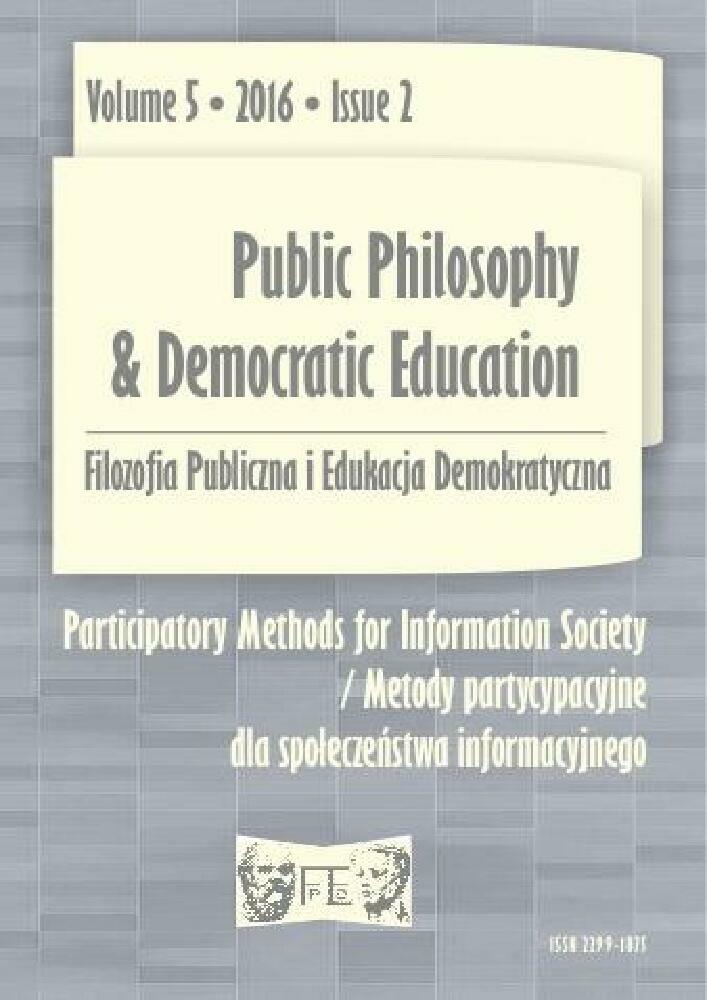Abstract
The paper presents a new approach to cognitive aspects of public space based on the Bayesian framework for cognition. According to it, cognition is powered by hypothesis-testing brain, constantly minimizing its prediction error. Expectations the brain generates can be analyzed at three different levels of organization: (1) neural implementation, comprising of three distinctive cortical networks, (2) mental computation, consisting of three parts of the Bayes’ rule, and (3) social behavior inside three different social networks. Properly designed the public space can be part of the extended mind of its inhabitants, enhancing or substituting their brains’ activity.
References
Ariely, D. (2013). The (Honest) Truth About Dishonesty. London: Harper Collins.
Bennett, Ch. (1990). How to define complexity in physics, and why. In: W. Zurek (Ed.), Complexity, Entropy and the Physics of Information. SFI Studies in the Sciences of Complexity, VIII. Boston, MA: Addison-Wesley.
Błaszak, M. (2013). Ekotypy poznawcze człowieka [Cognitive ecotypes of human beings]. Poznań: Bogucki Wydawnictwo Naukowe.
Bressler, S. L., Menon, V. (2010). Large-scale brain networks in cognition: emerging methods and principles. Trends in cognitive sciences, 14(6), 277-290.
Clark, A. (2016). Surfing Uncertainty. Oxford: Oxford University Press
Corballis, M. (2015). The Wandering Mind. What the Brain Does When You’re Not Looking. Chicago: The University of Chicago Press.
Craig A. D. (2015). How do you feel? An Interoceptive moment with your neurobiological self. New Jersey: Princeton University Press.
Crawford, M. (2015). The World Beyond Your Head. How to Flourish in an Age of Distraction. London: Viking.
Crick, F. (1995). The Astonishing Hypothesis. The Scientific Search for the Soul. New York: Touchstone.
Dennett, D. (2017). From Bacteria to Bach and Back. The Evolution of Minds. New York: W. W. Norton & Co.
Flynn, J. (2016). Does Your Family Make You Smarter? Nature, Nurture and Human Autonomy. Cambridge: Cambridge University Press.
Frisby, J., Stone, J. V. (2010). Seeing. The Computational Approach to Biological Vision. Cambridge, MA: The MIT Press.
Gazzaley, A., Rosen, L. (2016). The Distracted Mind. Ancient Brains in a High-Tech World. Cambridge, MA: The MIT Press.
Gibson, J. J. (1979). The ecological approach to visual perception. Boston: Houghton Mifflin.
Gluckman, P., Hanson, M. (2006). Mismatch. The Lifestyle Diseases Timebomb. Oxford: Oxford University Press.
Goldberg, E. (2010). The New Executive Brain. Frontal Lobes in a Complex World. New York: Oxford University Press.
Granovetter, M. (1974). Getting a Job: A Study of Contacts and Careers. Cambridge, MA: Harvard University Press.
Gregory, R. (2009). Seeing Through Illusions. Oxford: Oxford University Press.
Haidt, J. (2012). The Righteous Mind. London: Allen Lane.
Hallowell, E. (2005). Overloaded Circuits: Why Smart People Underperform, „Harvard Business Review”, January.
Hohwy, J. (2013). The Predictive Mind. Oxford: Oxford University Press.
Hurley, S. (2001). Perception and action: Alternative views. Synthese, 129(1), 3-40.
Koutstaal, W., Binks, J. (2015). Innovating Minds. New York: Oxford University Press.
Laland, K. (2017). Darwin’s Unfinished Symphony. How Culture Made the Human Mind. New Jersey: Princeton University Press.
Levitin, D. (2015). The Organized Mind: Thinking Straight in the Age of Information Overload. London: Penguin.
Libet, B. (2005). Mind Time. Cambridge, MA: Harvard University Press.
Lieberman, M. (2013). Social. Why Our Brains Are Wired to Connect. Oxford: Oxford University Press.
Lotto, B. (2017). Deviate. The Science of Seeing Differently. London: Weidenfeld & Nicolson.
Marr, D. (1982). Vision. New York: W. H. Freeman.
Massey, D. (2005). Strangers in a Strange Land. New York: W. W. Norton & Co.
Milardo, R. M. (1992). Comparative methods for delineating social networks. Journal of social and personal relationships, 9(3), 447-461.
Miller, J., Page, S. (2007). Complex Adaptive Systems. An Introduction to Computational Models of Social Life. New Jersey: Princeton University Press.
Neubert, F. X., Mars, R. B., Thomas, A. G., Sallet, J., Rushworth, M. F. (2014). Comparison of human ventral frontal cortex areas for cognitive control and language with areas in monkey frontal cortex. Neuron, 81(3), 700-713.
Norretranders, T. (1998). The User Illusion. New York: Viking. Raichle, M. E., Snyder, A. Z. (2007). A default mode of brain function: a brief history of an evolving idea. Neuroimage, 37(4), 1083-1090.
Rasmussen, S. E. (1962). Experiencing Architecture. Cambridge, MA: The MIT Press.
Ross, L., Greene, D., House, P. (1977). The “false consensus effect”: An egocentric bias in social perception and attribution processes. Journal of experimental social psychology, 13(3), 279-301.
Stone, J. V. (2012). Vision and Brain. Cambridge, MA: The MIT Press.
Uddin, L. (2017). Salience Network of the Human Brain. London: Academic Press.
West, G. (2017). Scale. The Universal Laws of Life and Death in Organisms, Cities and Companies. London: Weidenfeld & Nicolson.
License
Copyright (c) Authors retain copyright and publishing rights to their articles in this journal, granting the journal the right to distribute them under the terms of the CC BY-NC-ND 4.0
